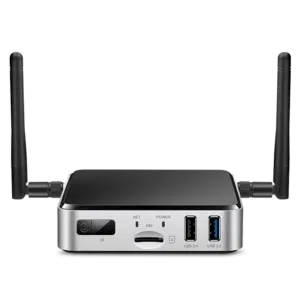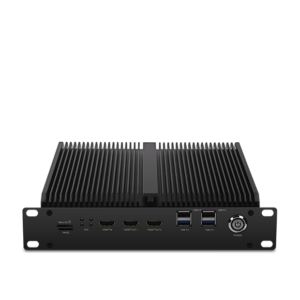The Impact of Operating AI on Side Devices
The Impact of Operating AI on Side Devices
Blog Article
Real-World Programs of AI on Side Devices
Real-World Applications of AI on Side Products
Artificial intelligence (AI) is no more limited to the kingdom of big, centralized information centers. Thanks to improvements in engineering, edge units today play an integral position in deploying AI straight wherever data is generated. But what does AI on side products mean, and how come it producing this kind of news? Here, we'll explore how edge ai device works in the real world through edge products and uncover its wide range of useful applications.

What's AI on Side Products?
AI on side products describes deploying artificial intelligence calculations directly on devices like smartphones, cameras, drones, or IoT sensors. These devices do not require use of centralized machines for control data; alternatively, they perform evaluation and decisions domestically, creating the process faster, more effective, and usually more secure.
The "edge" here just refers to research performed close to or at the foundation of data era, as opposed to counting on the cloud. This change is driven by the requirements for real-time knowledge processing and the requirement to reduce latency, improve solitude, and lower bandwidth usage.
Crucial Real-World Purposes of Side AI
1. Wise Security
AI-powered cameras designed with skin recognition, action recognition, and anomaly recognition are transforming detective systems. Edge units in that domain may analyze video channels in real-time to spot suspicious activities, eliminate false alarms, and improve community safety. As an example, AI algorithms can identify strange movements and attentive authorities straight away without the need to send movie information to a main server for analysis.
2. Healthcare Monitoring
Wearable products and lightweight medical equipment are leveraging ai m.2 module for managing wellness information more efficiently. Edge-based AI in units like wellness trackers and smartwatches displays users' vitals, such as for instance heartrate, air degrees, or body force, in real-time. These techniques analyze data domestically and offer instant feedback, paving just how for faster treatment during emergencies.
Beyond wearables, advanced medical imaging units designed with on-device AI can identify signals of disorders like cancer, permitting earlier diagnoses even yet in rural parts without internet connectivity.
3. Autonomous Cars
Self-driving cars are among the absolute most well-known types of side AI in action. With sensors, cameras, and LiDAR systems helping as data options, AI computations get position onboard these cars to make split-second decisions. From sensing pedestrians and obstacles to moving city streets, side AI ensures that the automobile runs reliably and efficiently. The real-time control convenience of side units eliminates the reliance on high-latency cloud methods, ensuring safety in life-critical scenarios.
4. Retail Analytics
Side units in retail situations are helping corporations analyze consumer behavior. Intelligent racks and AI-equipped cameras can detect client tastes, monitor stock, and actually modify in-store activities in actual time. The information created from these devices helps shops produce knowledgeable decisions, improve customer satisfaction, and improve inventory management.

5. Commercial IoT
Factories and commercial plants are adopting edge AI to revolutionize their monitoring and automation processes. AI-powered receptors on equipment identify potential errors well before they cause expensive failures. Predictive preservation driven by side AI reduces downtime, increases production, and guarantees protection on the production floor.
6. Customized Activities in Customer Units
Your smartphone is a prime example of how side AI personalizes user experiences. Functions such as voice personnel, versatile camera controls, and on-device language interpretation use real-time AI to respond to consumer wants without sending sensitive data to external servers. This fosters equally ease and privacy for the conclusion user.
The Growing Influence of Side AI
The adoption of AI on edge devices remains to surge, pushed by industries' raising demand for low-latency, real-time computing, and higher information privacy. Its purposes are reshaping industries ranging from healthcare and automotive to public safety and retail. By adding AI's power closer to wherever data is developed, side products are not only increasing performance but also showing the unlimited possible of development in the present connected world. Report this page